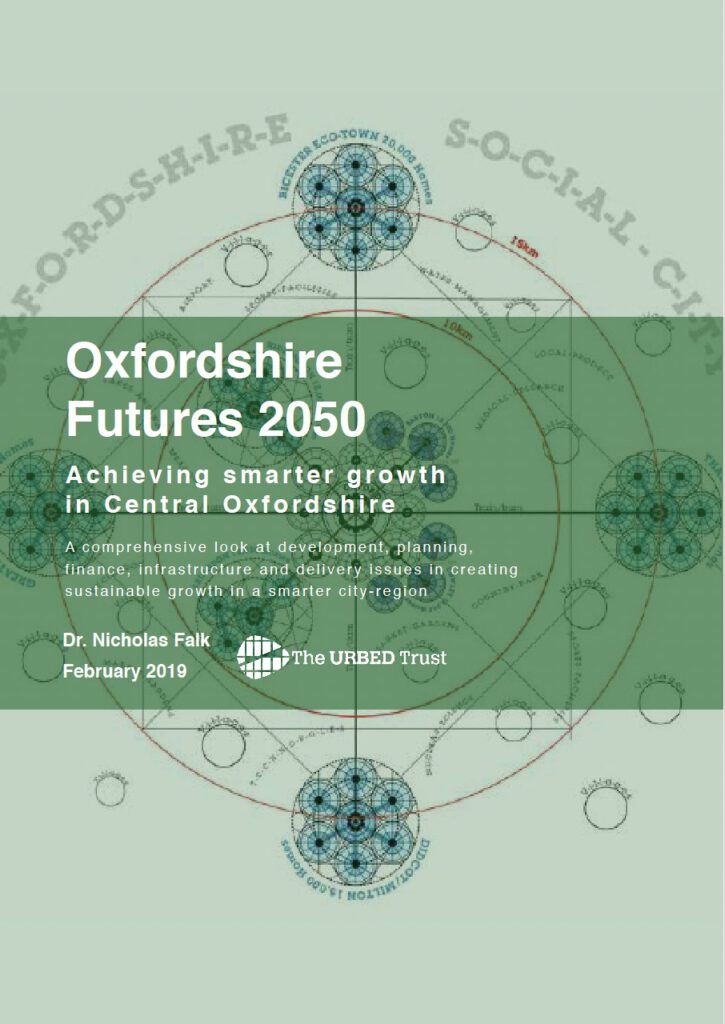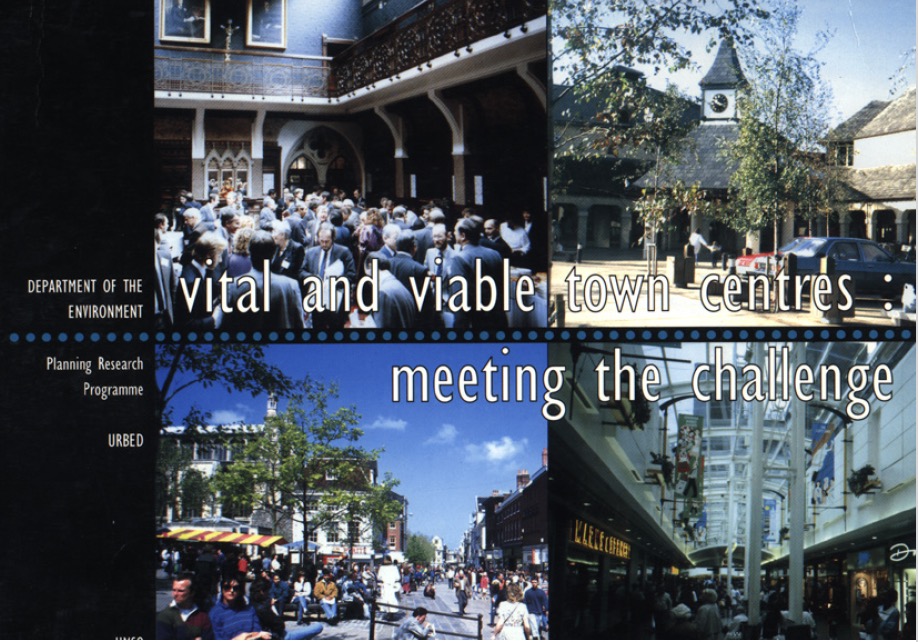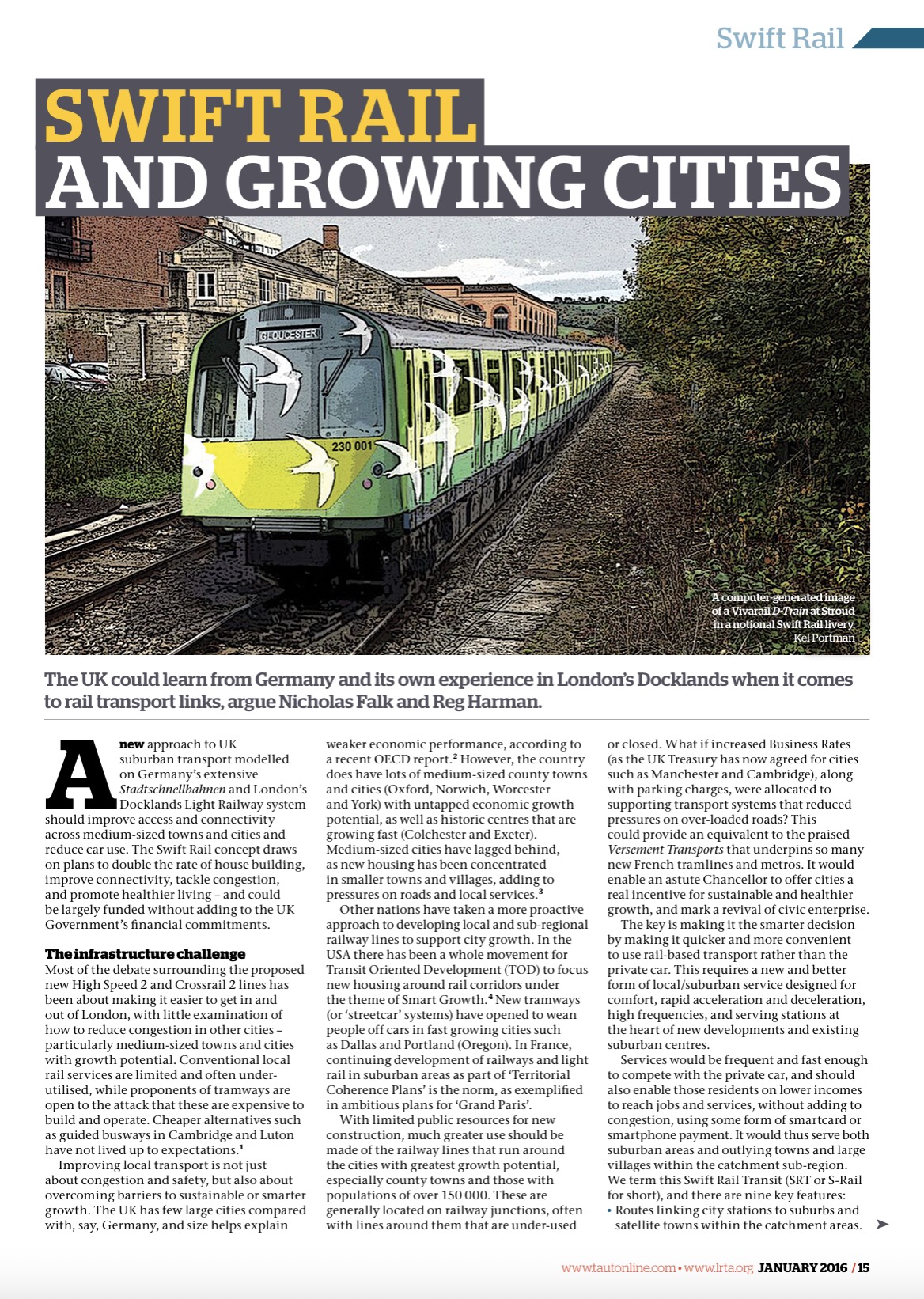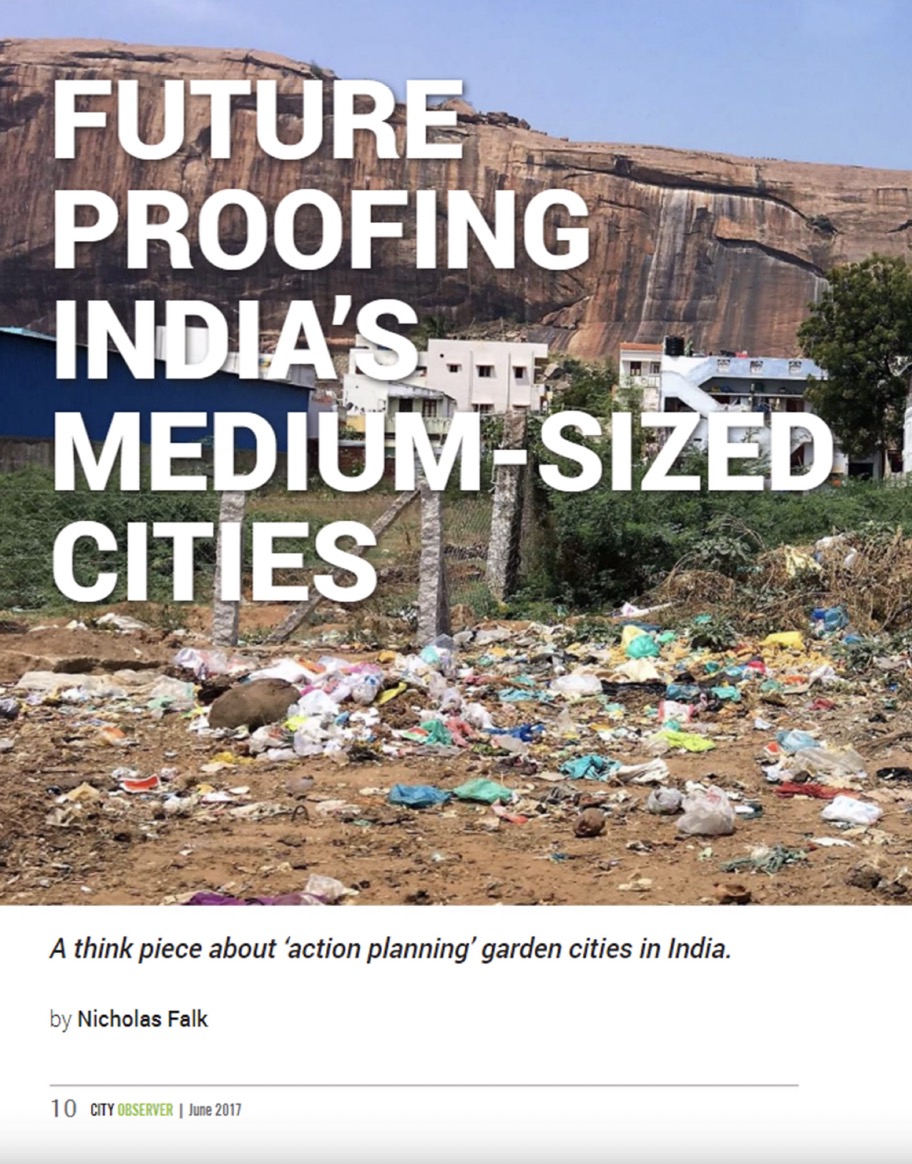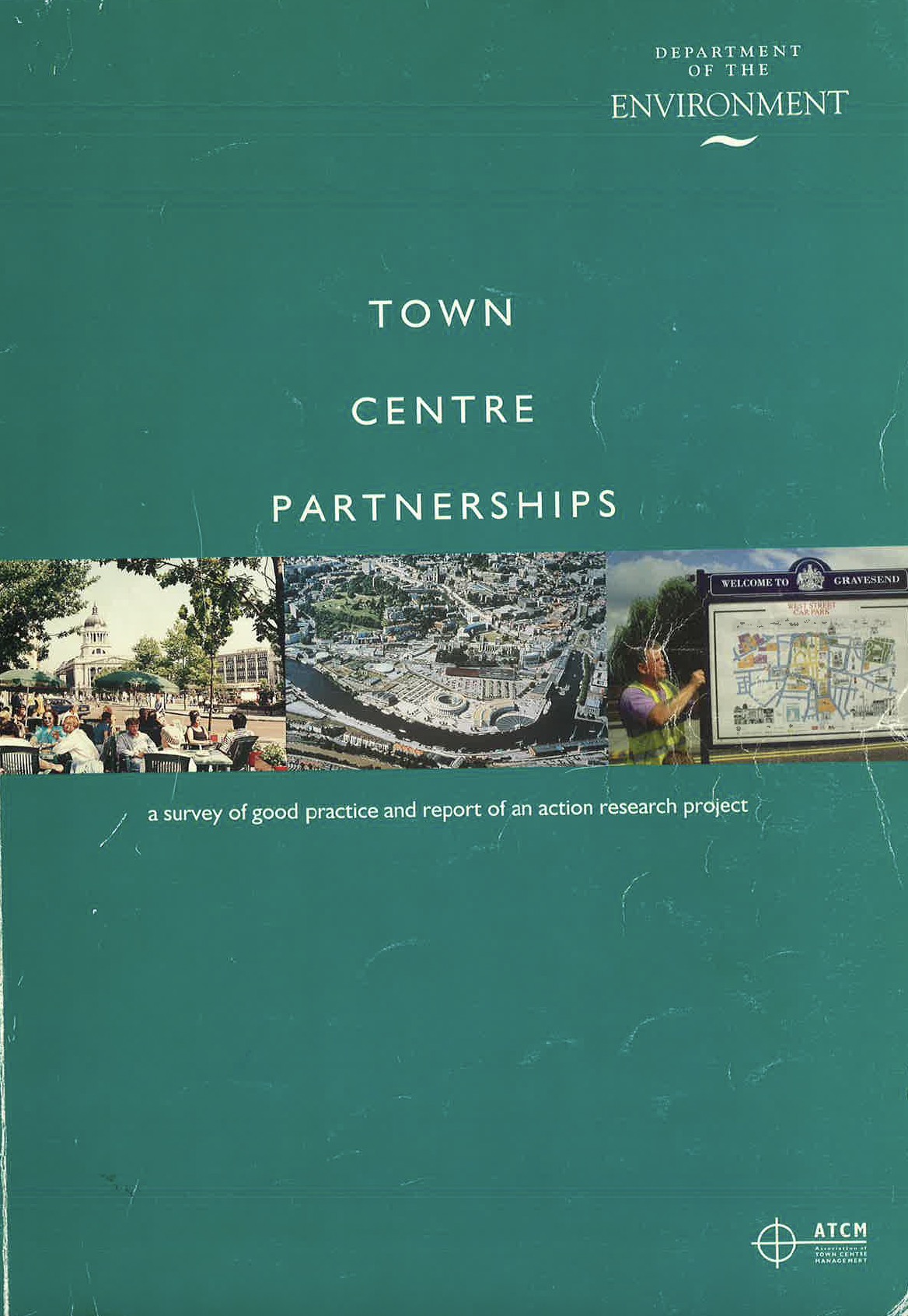This report, commissioned by the Oxford Civic Society and prepared by Nicholas Falk, Director of The URBED Trust, is based on five years of work and considers how Central Oxfordshire should respond to the pressures for new housing. It follows the Oxford Civic Society’s 2014 report “Oxford Futures: achieving smarter growth in Central Oxfordshire”, which called for “a spatial growth plan and a charter for sustainable development”. It is published as a contribution to work on the Oxfordshire 2050 plan and the CaMkOx arc.
The report recommends that development should be concentrated around existing and new stations on the local rail network in Central Oxfordshire and Oxford, including the re-opened Cowley branch and on the 200 acres of under-used land around a rebuilt central Oxford railway station. Applying the SwiftRail concept, frequent and fast local rail services will take traffic from congested roads and form the core of an integrated public transport network for Central Oxfordshire. We are calling this the ‘Oxford Metro’. Over time, main bus routes serving the city would be upgraded to ‘rapid transit’, and the city’s first tram line would be built from Botley to the Headington hospitals and university campuses.
Oxford has to change to meet increasing competition if it is to maintain its international position. This report draws on the experience of Oxford’s twin city of Grenoble and the comparable cities of Freiburg and Cambridge. We have held nine consultations with experts, including a symposium at the Houses of Parliament. Joining transport and development will improve public health by cutting car mileage. It will also help tackle Oxford’s housing crisis by mobilising land and finance. It will put under-valued assets to better use.
The report is in eight sections, summarised here:
- Concentrate transport and development. A coordinated approach is needed in Central Oxfordshire because of high land values which reflect strong housing demand, and the economic potential of its leading universities and businesses along the ‘science spine’. The various stakeholders have agreed to collaborate to meet commitments to the government to provide enough land for 100,000 houses by 2031. Congestion pressures in and around the historic city centre make it vital to ‘join up’ transport and development and avoid too much dispersal.
- Use garden city principles to share land value gains. The Garden City idea, used to develop the New Towns after the Second World War combines the benefits of town and country living. With the right approach and development frameworks the potential gains in land values can be shared. These can fund vital local infrastructure; public transport, country parks which also relieve flooding, the health centres and schools that communities need.
- Adopt a Charter for Sustainable Development. Consultations came up with principles that could help each agreement, including developing in the right place to cut car use, creating balanced and healthier communities to meet social needs, and building distinctive places and minimising environmental impacts. These impacts can be measured and valued and set against any additional costs. Strategic or large scale developments (over 1,000 homes) need development frameworks if the results are to be economic, equitable and environmentally friendly.
- Model alternative scenarios before objectives are set. Agreeing objectives against which options can be assessed is crucial if expensive and time-wasting arguments are to be minimised. There are planning techniques which can help in assessing different scenarios over time, using the power of Geographic Information Systems (GIS).
- Avoid urban sprawl in assessing options. Locating new housing to make best use of scarce land and infrastructure increases ‘civic wealth’. Sustainable urban extensions around transport corridors will enable the gain in land values to be shared to help upgrade local infrastructure so that everyone benefits to some extent and no-one loses out over time.
- Only connect. Just as Cambridge did 20 years ago, Oxford will need to decide what pattern of growth fits its needs best. Using established planning methods, ways can be found to avoid building more identikit housing estates, making sure that development looks better and meets future needs more intelligently.
- Package funding. A smarter approach to funding is also needed, through packaging different forms of finance rather than relying on just public or private capital. The report reviews the potential of crowd funding; congestion and parking charges; Community Infrastructure Levy and Section 106 charges; infrastructure bonds; Tax Increment Finance; land value charges; and public private partnerships. All of these can supplement the funds that private developers can access. The formation of a development corporation could overcome land assembly issues.
- Resolve key issues soon. The concluding section summarises key questions to be answered as the process of drawing up a Joint Spatial Plan gets going. It argues that a vision such as “developing a 21st century garden city, connected by a high quality transport system, the Oxford Metro” could generate enough positive support and excitement to overcome the inevitable objections to doing anything. Doing nothing is not an option, and the prizes will be well worth the effort.
The full report includes twenty exhibits or diagrams which bring out the main messages. There is supplementary information in the appendices on elements of an integrated transport system, and also lessons from European cities that have faced comparable challenges.

